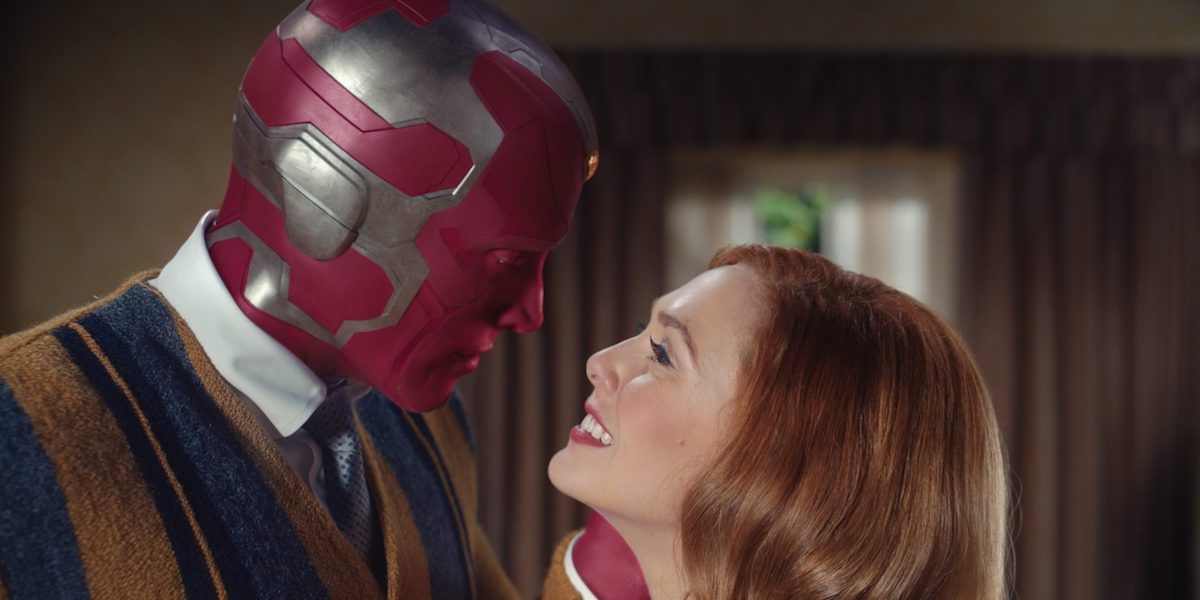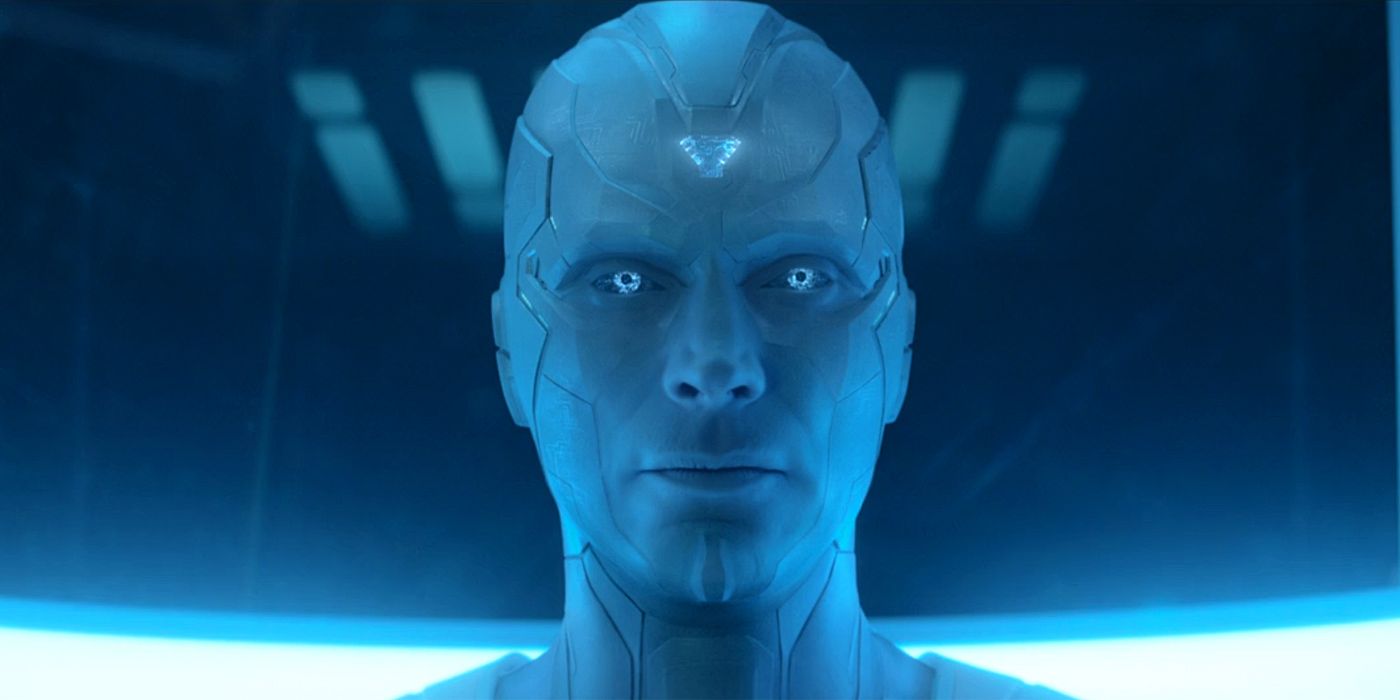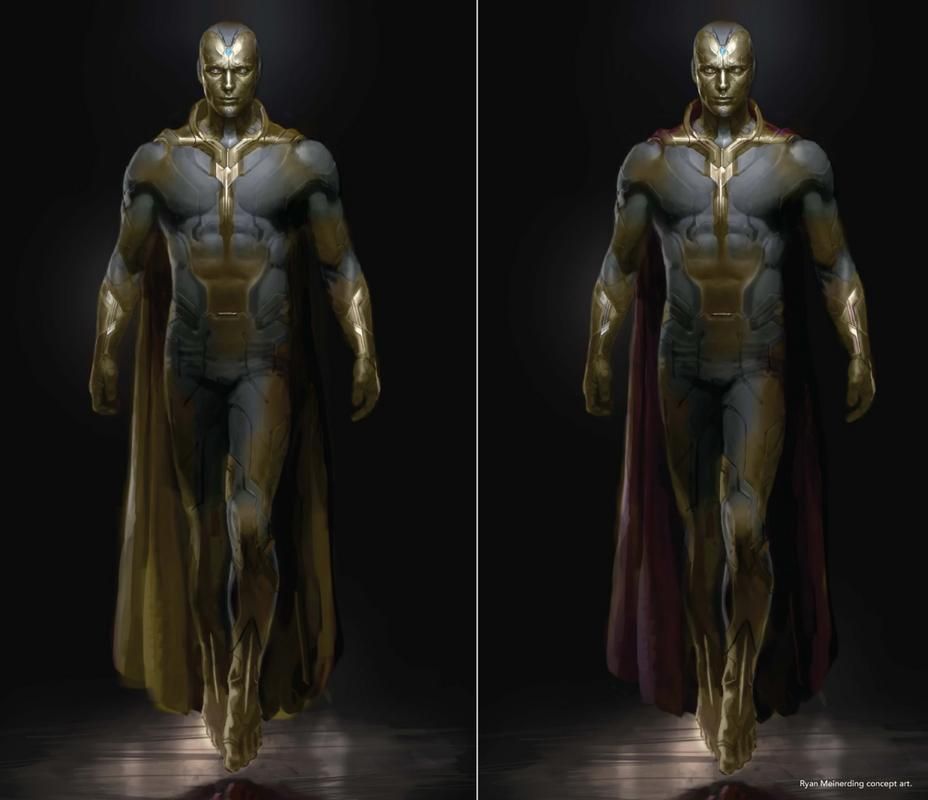WARNING: The following contains spoilers for WandaVision Episode 8, "Previously On," streaming now on Disney+.
In comics, costume changes occur all the time, and when those changes get translated into projects like WandaVision, they can range from being an unmentioned minor detail to a major plot point. Now, the mid-credits scene of the series' latest episode opts for the latter as it's revealed that Vision is restored to life with his body rendered an eerie white. Those familiar with the comics will likely recognize this as a look Vision acquires in the source material, but perhaps even more obscure is that the Marvel Cinematic Universe was preparing similar designs as early as 2015's Age of Ultron.
As the plot of WandaVision unfolds, it becomes clear that S.W.O.R.D. has its hands in the events of the series more than they initially seemed. Recent revelations made it clear that they were actively trying to revive Vision, viewing him as a superweapon that was too valuable an asset to waste. In the latest episode, he's repeatedly treated as an object, being a hunk of valuable vibranium that can't just be buried, and the mid-credits scene shows that S.W.O.R.D. is fully ready to put Vision back online with a new look.
Vision's new look is a haunting white that loses the vibrancy of the android's former self. Whereas the original Vision resulted from a combination of vibranium with the Mind Stone that sat in his forehead, Hayward explains that the only energy source under the sun that they could identify to power the android successfully was the energy Wanda produced around Westview. Siphoning off power from the hex, Hayward and his crew manage to bring Vision back online without the Mind Stone that first brought him to life.
Playing around with the chalk-white appearance in some earlier drafts, Vision's designers ultimately shelved the idea of Vision's pale look during work on Age of Ultron. Thankfully, saving it for proves to be not only more appropriate for the character but more comic-accurate as well, harkening back to Vision's pale form taken in West Coast Avengers after a similar resurrection. The circumstances of that appearance were quite similar to WandaVision as well, with many of the Avengers grieving the loss of their friend, only to find after Henry Pym rebuilt him that without his previous brain patterns, he was an emotionless husk of his former self.
The same could be likely to happen as Vision confronts Wanda in the season finale, now acting as the cold and logical weapon Hayward treated him as from the very beginning. To that end, the chalk-white design mirrors this emotionality perfectly and shows not only the MCU's commendable restraint for using the design when the hero originally appeared but also their resourcefulness in tapping back into it even six years after all these years.
The eerie design is too effective to let collect dust in a drawer somewhere, and it's a joy that the MCU found the perfect opportunity to employ it. Though only time will tell if this new version of Vision will stick around, it still stands out as proof that even the most ridiculous concepts can find a place in the franchise.
Written by Jac Schaeffer and directed by Matt Shakman, WandaVision stars Elizabeth Olsen as Wanda Maximoff/Scarlet Witch, Paul Bettany as Vision, Randall Park as Agent Jimmy Woo, Kat Dennings as Darcy Lewis, Teyonah Parris as Monica Rambeau and Kathryn Hahn as Agnes. New episodes air Fridays on Disney+.



